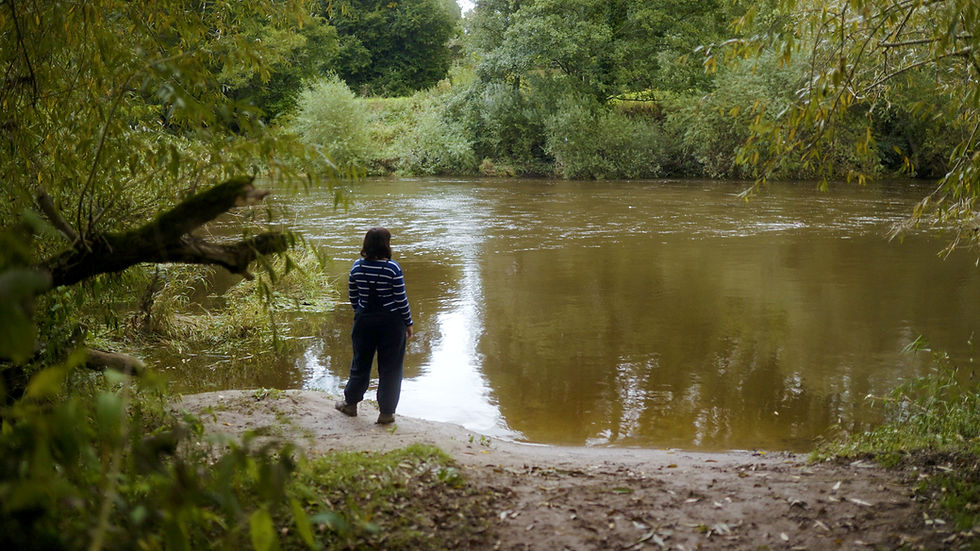The Environmental Improvement Plan review: A fresh opportunity to act on nitrogen pollution
- Ellie Roxburgh
- Dec 3, 2024
- 4 min read
Updated: Dec 4, 2024
A guest blog by Hannah Blitzer and Emma Clarke from Wildlife and Countryside Link
Nitrogen is a vital part of our environment. It is found in our soils, water and air and, in the right balance, is an important natural element for healthy biodiversity and ecosystems.

But too much nitrogen can tip the scales towards harm. Rampant nitrogen pollution from the overuse of synthetic fertilisers, unsustainable livestock management practices, energy combustion and transport are putting nature and people at risk. Biodiversity cannot cope with the overwhelming amount of nitrogen in the environment. Excess nitrogen has contributed to numerous environmental and public health threats across England, including:
Overloading of sensitive habitats in England, placing many critical species like mosses and lichens and Sites of Specific Scientific Interest at risk.
Dangerous levels of particulate matter that contribute to air pollution and related health conditions and excess deaths.
Nitrous oxide emissions that significantly contribute to global warming.
Extremely poor water quality, with only a fraction (14%) of English rivers in good ecological health.

Organic Beef herd from Belmont Estate, Somerset
These issues are difficult and complex policy challenges, but the road ahead is clear: We need to adopt more ambitious policy on nitrogen now to avoid further damage to our fragile water and terrestrial ecosystems, mitigate climate change and safeguard public health in England.
The UK has a series of national and international commitments to reduce pollution and promote nature recovery by 2030. Meeting these commitments without stemming the nitrogen pollution problem will be difficult, if not impossible. Luckily, we already have excellent legal tools to help us reduce excess nitrogen in the environment. The Environmental Improvement Plan 2023 (EIP) was a crucial delivery tool for these commitments, setting out the targets and actions needed to achieve those goals. However, in its annual progress report, the Office for Environmental Protection (OEP) indicated the Government was largely ‘off track’ in delivering on environmental targets. For nitrogen this means:
Goal 1: Thriving plants and wildlife - The condition of sites of specific scientific interest has decreased in the five years leading up to 2023, with 99% of sensitive habitats in England overloaded with nitrogen. Without reducing nitrogen loading, the condition of sensitive habitats will not recover and the government will remain off track to meet the target of halting nature decline by 2030.
Goal 2: Clean Air - No change was seen in the damaging levels of nutrient nitrogen deposition, and deposition on sensitive and priority habitats has increased. The OEP noted that nitrogen deposition targets under the Clean Air Strategy are unlikely to be met, meaning the UK is sliding backwards in progress on this target. Despite past improving trends in ambient air pollution, the UK is still exceeding its legally binding target for the annual mean concentration of nitrogen dioxide. Fine particulate matter (PM2.5) and ammonia (a chemical compound comprised of nitrogen and hydrogen) emissions have seen little to no change – in part due to agricultural practices.
Goal 3: Clean and Plentiful Water – The Environment Act 2021 target to reduce nitrogen (N), phosphorus (P) and sediment pollution from agriculture into the water environment by at least 40% by 2038, compared to a 2018 baseline (agriculture water target) was not assessed. However, the trends show the Government is largely off track for its commitments to achieve good ecological status for water bodies.
Goal 5: Maximising our resources, minimise our waste - Overall resource consumption remains high and there is no target for resource efficiency. With the average nitrogen use efficiency in the agricultural sector averaging 55%, the government should introduce a target to reduce the amount of nitrogen wasted. There is scope for a circular nitrogen economy to reduce 'new' nitrogen entering the system, and increasing recycling of nutrient resources.
Following the OEP report and a legal challenge by eNGOs earlier this year on the sufficiency of the EIP, the Government announced in July 2024 a rapid review of the EIP to meet Environment Act 2021 targets. Now that the Government is refreshing the EIP, alongside publishing more detailed delivery information, we have a unique opportunity to raise the profile of nitrogen pollution and secure strong commitments to safeguard people and the environment from further harm.
We anticipate the revised EIP in early 2025. In the meantime, the Government should work with stakeholders to integrate the following recommendations into the revised EIP:
The government should ensure that progress to meeting targets does not interfere with progress to meet others, with appropriate mitigation of trade-offs.
A comprehensive nutrient management action plan should be published, to be implemented at farm level by nutrient management budgets and supported by other measures.
In addition to the EIP resource productivity target, the government should introduce a resource use efficiency target with a nitrogen target embedded within it.
Implementing environmental permitting regulations to dairy and beef systems, alongside a reduction in the permitting requirement threshold of pigs and poultry, would increase progress to meeting Goals 1, 2 and 3.
Where voluntary schemes are failing to deliver the required nitrogen impact reductions, such as take up of the nature-friendly farming schemes, regulatory approaches should be developed, partnered by a ramping up of advisory support networks.
Perverse subsidies should be removed in the agricultural sector, specifically the red tax on diesel.
Government should response to the NMEG report as a matter of urgency, and in particular to the proposed recommendations.




Comments